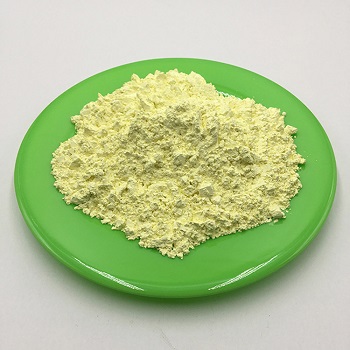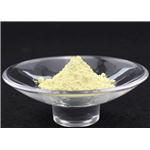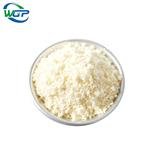Description
Holmium oxide occurs in nature, usually associated with small quantities
of other rare-earth oxides. Commercial applications of this compound have not
been explored fully. It is used in refractories and as a catalyst. Characteristic
spectral emission lines of holmium oxide glass are used to calibrate spectrophotometers.
Chemical Properties
Holmium oxide (Ho2O3), also known as Holmia, is a light yellow powder that is one of the most paramagnetic substances known.

Holmium oxide glass has been used as a wavelength standard for over four decades. It has a number of desirable features that have made it a commonly used wavelength standard. It does not induce a slit positioning error as atomic emission lamps may. It is also compact, easy to use, and most importantly, stable over long periods of time.the use of filters made of holmium oxide glass allows the calibration of wavelength for a spectrophotometer over a broad range.
Uses
Holmium(III) oxide acts as colorants which is used for cubic zirconia and glass, as a calibration standard for optical spectrophotometers, as a specialty catalyst, phosphor and a laser material.
Holmium Oxide, also called Holmia, has specialized uses in ceramics, glass, phosphors and metal halide lamp, and dopant to garnet laser. Holmium can absorb fission-bred neutrons, it is also used in nuclear reactors to keep atomic chain reaction from running out of control. Holmium Oxide is one of the colorants used for cubic zirconia and glass, providing yellow or red coloring.
It is also used in Yttrium-Aluminum-Garnet (YAG) and Yttrium-Lanthanum-Fluoride (YLF) solid-state lasers found in microwave equipment (which are in turn found in a variety of medical and dental settings).
Preparation
Holmium oxide is prepared by thermal decomposition of carbonate, oxalate, hydroxide, nitrate, sulfate, or any oxo salt of holmium:
Ho2(CO3)3 →Ho2O3 + 3CO2
Ho2(SO4)3 →Ho2O3 + 3SO3
The oxide may be obtained by direct combination of elements at elevated temperatures. The element in massive form, however, reacts slowly at high temperatures.
Chemical Properties
slightly beige solid
Physical properties
Yellow cubic crystal; density 8.41 g.cm3; melts at 2,415°C; insoluble in water; dissolves in acids (with reactions).
Uses
Holmium(III) oxide iacts as colorants which is used for cubic zirconia and glass, as a calibration standard for optical spectrophotometers, as a specialty catalyst, phosphor and a laser material.
Uses
Refractories, special catalyst.
Application
Holmium Oxide can be used as:
- A starting material to prepare Ho2O3-PVAfilm for generating stable Q-switching pulses in a thulium-doped fiber laser(TDFL) cavity.
- A catalyst for oxidative coupling of methane.
It can also be used as a dopant in the preparation of:
- Cadmium lead borate glasses.
- Diamond/copper composites to eliminate interfacial defects through the spark plasma sintering (SPS) method.
reaction suitability
reagent type: catalyst
core: holmium





